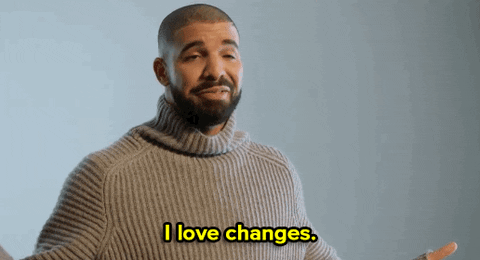
Starting up your own business can be one helluva journey, and taking the plunge is often the hardest first step. Once you’ve actually gotten things up and running, however, how do you know if your business is actually doing well or if you need to make adjustments to keep it on track?
Understanding the state of your business essentially comes down to data, and I know that’s probably not the sexy answer you were hoping for, but it’s the right one. When I was 23, my best mate and I decided to start our own clothing brand, and even though we thought we had a winning idea, we were naive to think we could succeed just by opening a web store and watching the money roll in. Had we paid attention to what our audience was telling us with their behaviours, we probably would have done a little better.

To be fair, we also underestimated how much work it would require outside of our regular 9 to 5 jobs, so ultimately we had no one to blame but ourselves. Eventually, we ended up selling the business and pretty much broke even, which isn’t a bad outcome at all considering how much both of us learnt from the experience.
If I was to try starting my own business again, here are the questions I’d be asking along the way to gauge its success rather than staring at a bank balance and waiting for it go up.
Is my audience growing?
I mean, it’s a pretty obvious question, but an important one nonetheless. If more people are consistently coming to your website and buying your products, that’s a pretty damn good indicator of success and growth. Duh.
For me and my pal, once we exhausted our friends and family as buyers – who were great at spreading the word and repping the brand – we really weren’t seeing new people coming in, which was obviously a problem. We were putting too much stake into word of mouth marketing when what we should have been doing was paying closer attention to reporting. Of the few new customers we did get, where did they find us and what were they actually after?

If we had taken advantage of some good reporting and insights, we would have had a better idea of what we were doing wrong and how we could have improved the situation instead of letting the whole thing sink into the ocean.
Mailchimp, for example, has a really useful suite of tools to help you track your audience in one location. By linking the service with your website, you can track your customer behaviour, what they like, what they don’t like, and how to target new audiences based on those insights to grow your bank account instead of your stress levels.
Have I actually done enough for my business?
What we didn’t do enough of in our own venture was look for ways to improve its reach. We spent too much time on things like design rather than marketing, which could have pushed us and our brand out to a wider audience, which ultimately would have resulted in more of that sweet cashola.
What I’m trying to say is, it may look as though things aren’t going great, but it may just be that you haven’t used all the tools in your box, if you catch my drift.
Audience insights can be used to tailor your approach to marketing, as well as empower you to test new things. One way of doing this is through A/B testing, which, as the name suggests, is a way of testing two different solutions to the same problem to see which works best. If your business is taking a dive, this is a great way of experimenting with new approaches, which can sometimes be as simple as changing an image or even a font.

We never tried new things and ultimately, it led to our business becoming stagnate. Had we tinkered with some different approaches to the way we marketed based on our existing customer base, we could have salvaged the venture instead of just selling it. But hey, try telling that to a couple of 23-year-olds who think they know everything.
Are my targets letting me down?
When we started our own venture, we had some pretty out-there goals, and while that’s totally fine, it’s important to be realistic. It’s all well and good to wanna become a millionaire in a year, but unless you’ve invented something insanely useful, it probably isn’t achievable in the short term.
It’s important to look at your business in the early stages and set goals that are achievable. If the data is telling you your business is failing, it might only be because your expectations are stupidly high or you’re targeting the wrong audience altogether.
For example, our target market was not willing to pay the price we originally set for our shirts and hats, and although dropping the price changed our profit expectations, it meant we were more aligned with our audience. What we should have done from there was start reaching out to new audiences we hadn’t considered previously, which is also something Mailchimp can help with.
By using a feature called audience lookalike finder, the platform can use your existing marketing data to search and find new audiences similar to the one you already have, boosting your chances of getting customers you hadn’t even considered in the first place.

At the end of the day, our business failed not only because we were naive, but also because we misdirected our efforts, and when you’re not doing it full-time, every spare minute you spend counts.
Not only can using and understanding data have help with the day-to-day running of a business, but it can also help you project profits to see if an idea or product is worth pursuing, and better yet, if it can sustain you on a full-time basis.
The biggest piece of advice I would give younger self? The tools you use are just as important as the idea you have. Oh, and that house you move into in Sydenham is gonna grow a bunch of mould on the wall. Don’t do it.







